Art World
Egypt Cracks Open a Newly Discovered Ancient Female Mummy, ‘Thuya,’ the Latest in a Blitz of New Finds
It's the first time an ancient mummy has been opened in front of the press.
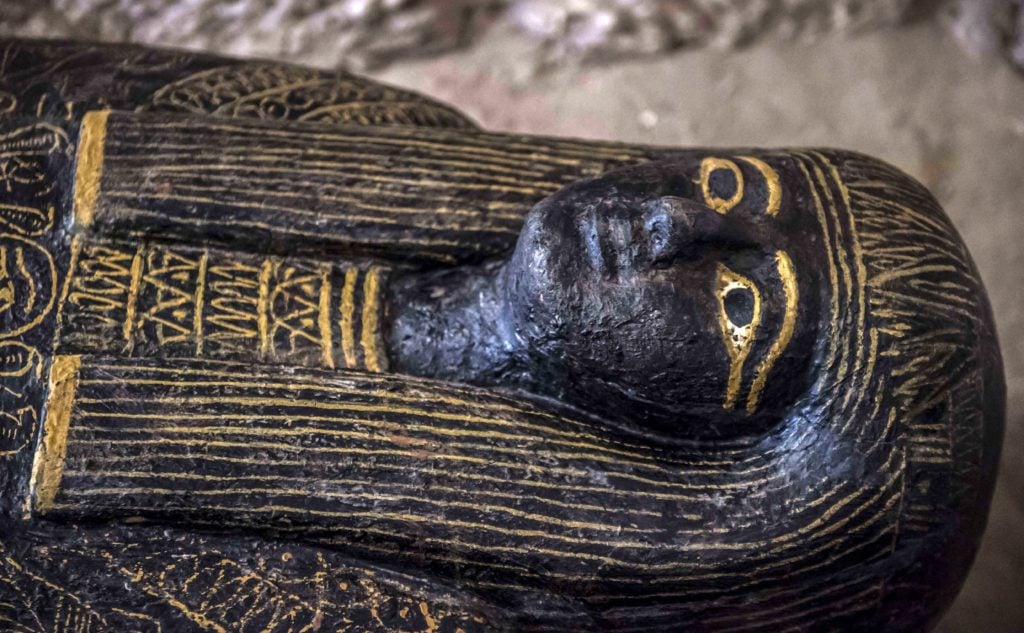
It's the first time an ancient mummy has been opened in front of the press.

Sarah Cascone

Authorities in Egypt have cracked opened a newly discovered ancient sarcophagus to unveil a more than 3,000-year-old female mummy, still perfectly preserved. The ancient sarcophagus was opened on Saturday in front of international media, likely in the hopes of boosting tourism, an industry that has been suffering since the 2011 Tahrir Square uprising.
The relic was one of two coffins found earlier this month by archaeologists from the French Institute of Oriental Archaeology and the French University of Strasbourg. The TT28 tomb, which belonged to a man called Huri, is in El-Asasef, Luxor, near the Valley of the Kings on the banks of the Nile.
“One sarcophagus was rishi-style, which dates back to the 17th dynasty, while the other sarcophagus was from the 18th dynasty,” said Egypt’s minister of antiquities, Khaled Al Anani, at the press conference, according to the Associated Press.
The first of the two newly discovered mummies has already been examined by Egyptian officials and reportedly holds the remains of an ancient priest who would have been responsible for embalming the pharaohs. The newly opened female mummy—the first one ever opened in front of the press—dates from the time of pharaohs Tutankhamun and Ramses II, and is named Thuya.
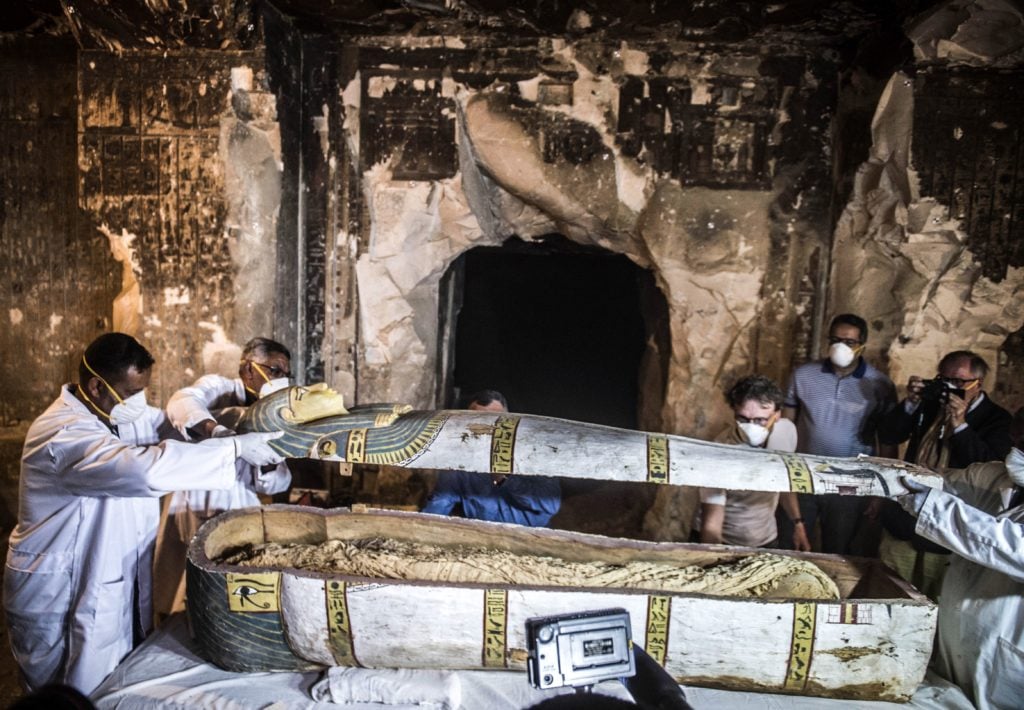
Egypt’s Ministry of Antiquities opens a newly discovered sarcophagus from tomb TT33 at the Al-Assasif necropolis in front of press on November 24, 2018. Photo by Khaled Desouki/AFP/Getty Images.
At the press conference, the Ministry of Antiquities also announced the discovery of a nearby tomb called Thaw-Irkhet-if, dated to the Middle Kingdom, about 4,000 years ago, but reused during Egypt’s late period.
The impressive new find features richly painted walls, skeletons, mummies, a papyrus scroll, two wooden statues, five colorful masks, and about 1,000 clay, faience, and wood Ushabti funerary figurines, believed to serve the dead in the afterlife. One particularly striking black wooden sarcophagus is carved with golden inlays in an intricate figurative design.
It’s been a banner year for Egyptian archaeology (despite disappointment after a claim that there were undiscovered secret rooms in King Tut’s tomb proved false) with the country announcing over a dozen important discoveries, including an ancient sphinx and evidence that the ancient Egyptians used ramps to build their colossal pyramids. Through such spectacular finds can make for good press, Agence France Presse notes that “the country is often accused of a lack of scientific rigor and neglect of its antiquities.”
See more photos from the new discoveries below.
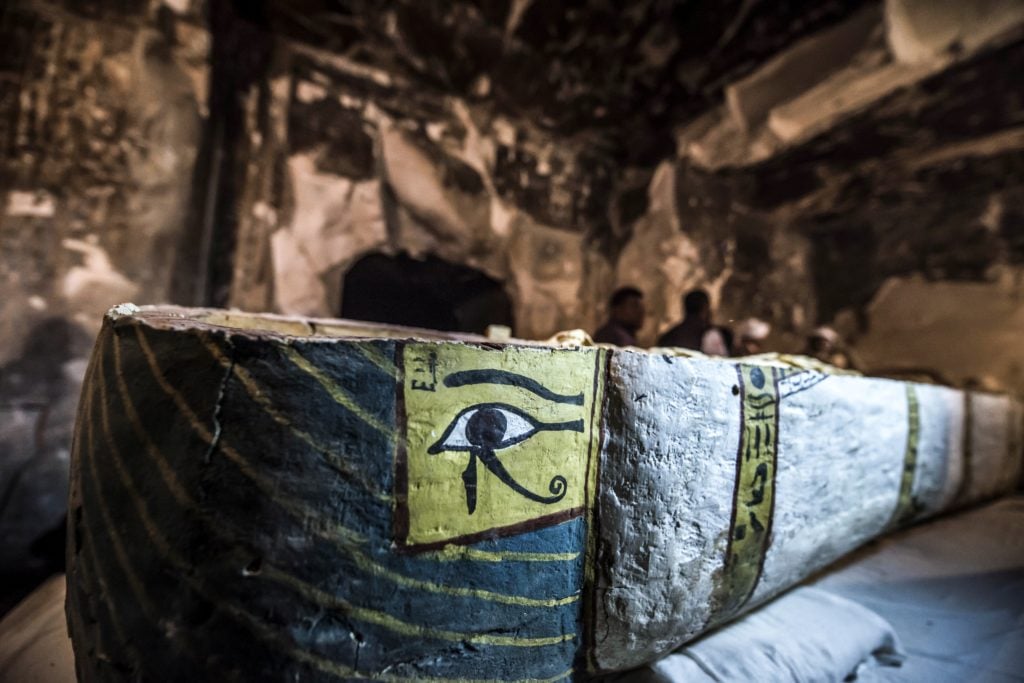
This intact Egyptian sarcophagus containing a well-preserved mummy of a woman named “Thuya,” wrapped in linen, was discovered by a French mission at the site of Tomb TT33 which dates to the 18th dynasty. Egypt’s Ministry of Antiquities opened the sarcophagus from tomb TT33 at the Al-Assasif necropolis in front of press on November 24, 2018. Photo by Khaled Desouki/AFP/Getty Images.
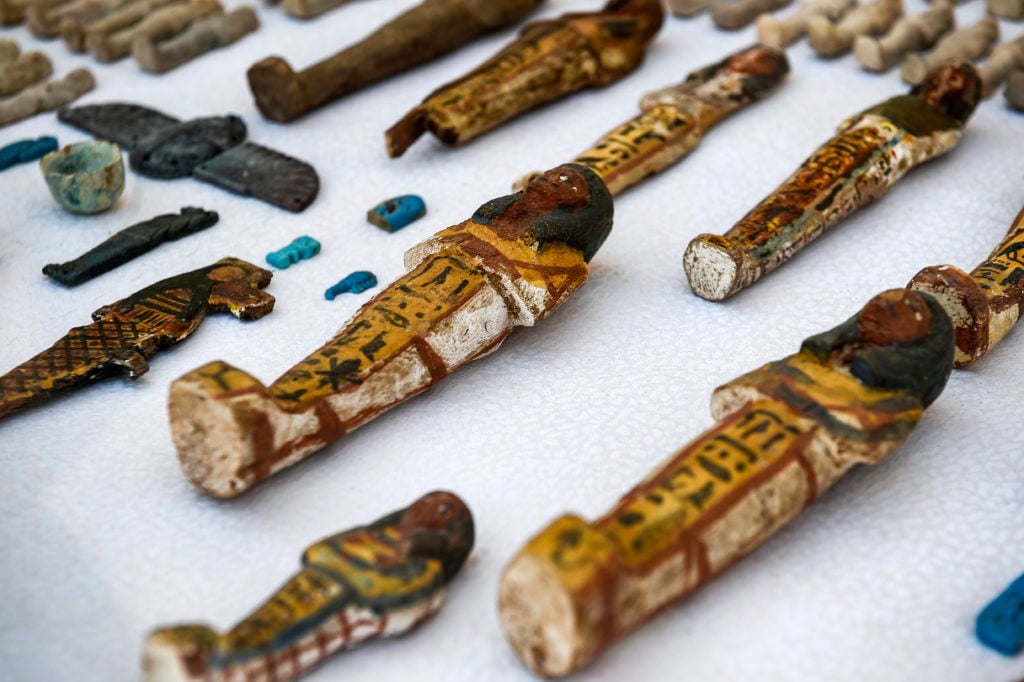
Carved wooden statues and funerary figurines called “Ushabtis,” made of wood, faience and clay discovered by an Egyptian archaeological mission at the site of Tomb TT28, or Thaw-Irkhet-If, at Al-Assasif necropolis on the west bank of the Nile north of the southern Egyptian city of Luxor. Photo by Khaled Desouki/AFP/Getty Images.
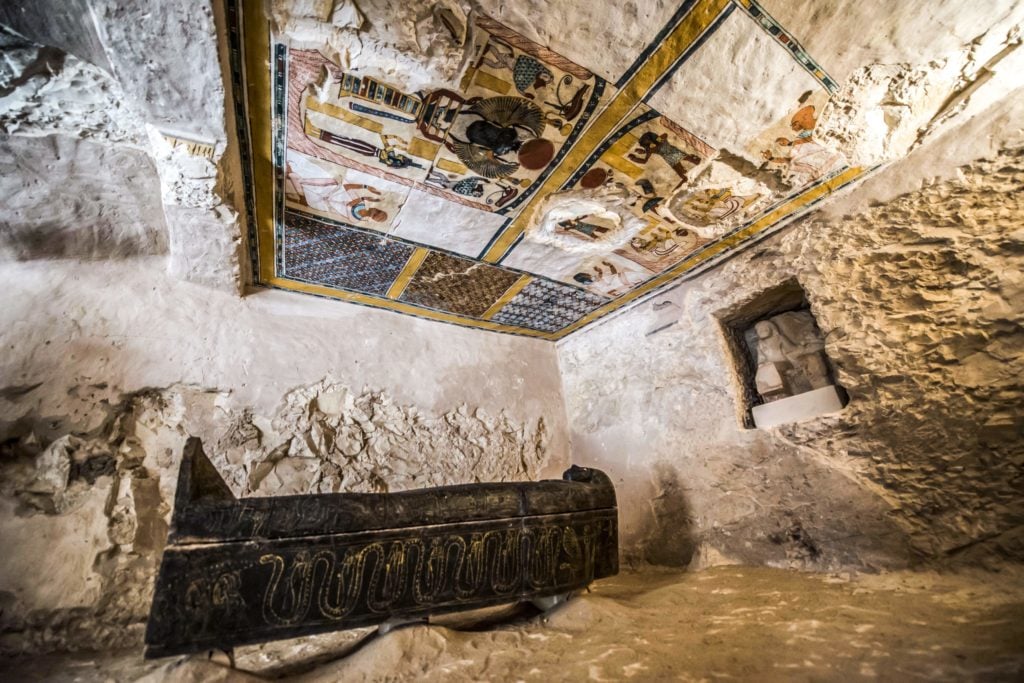
A carved black wooden sarcophagus inlaid with gilded sheets lying in a burial chamber decorated with colored scenes, in the site of tomb TT28, or Thaw-Irkhet-If, which was discovered by an Egyptian archaeological mission at Al-Assasif necropolis on the west bank of the Nile north of the southern Egyptian city of Luxor. Photo by Khaled Desouki/AFP/Getty Images.
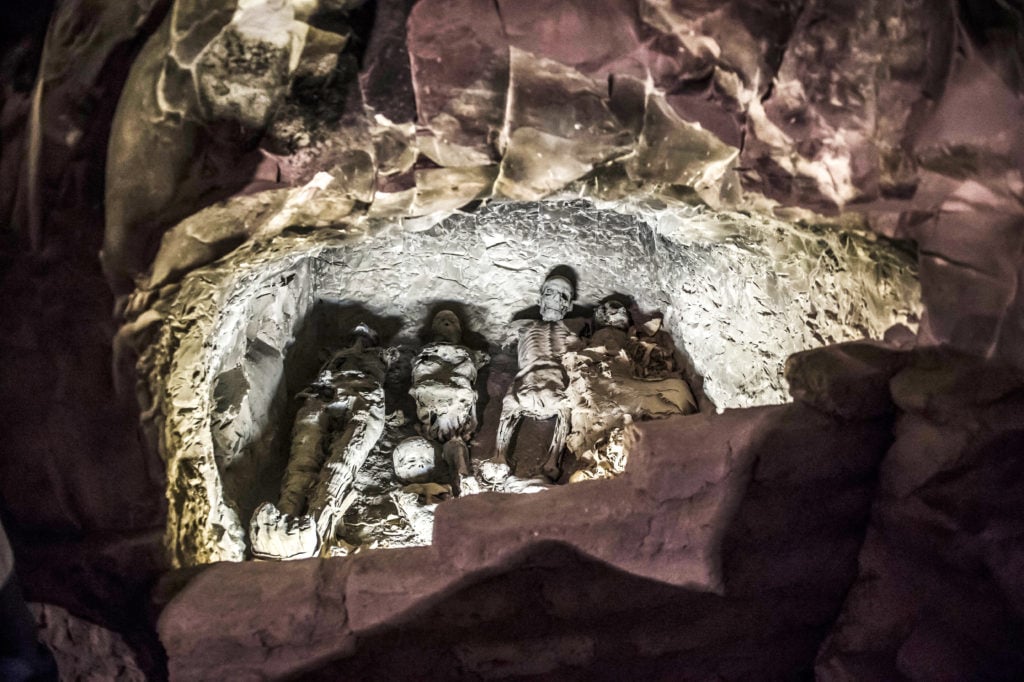
A group of mummies stacked together at the site of tomb TT28, or Thaw-Irkhet-If, which was discovered by an Egyptian archaeological mission at Al-Assasif necropolis on the west bank of the Nile north of the southern Egyptian city of Luxor. Photo by Khaled Desouki/AFP/Getty Images.
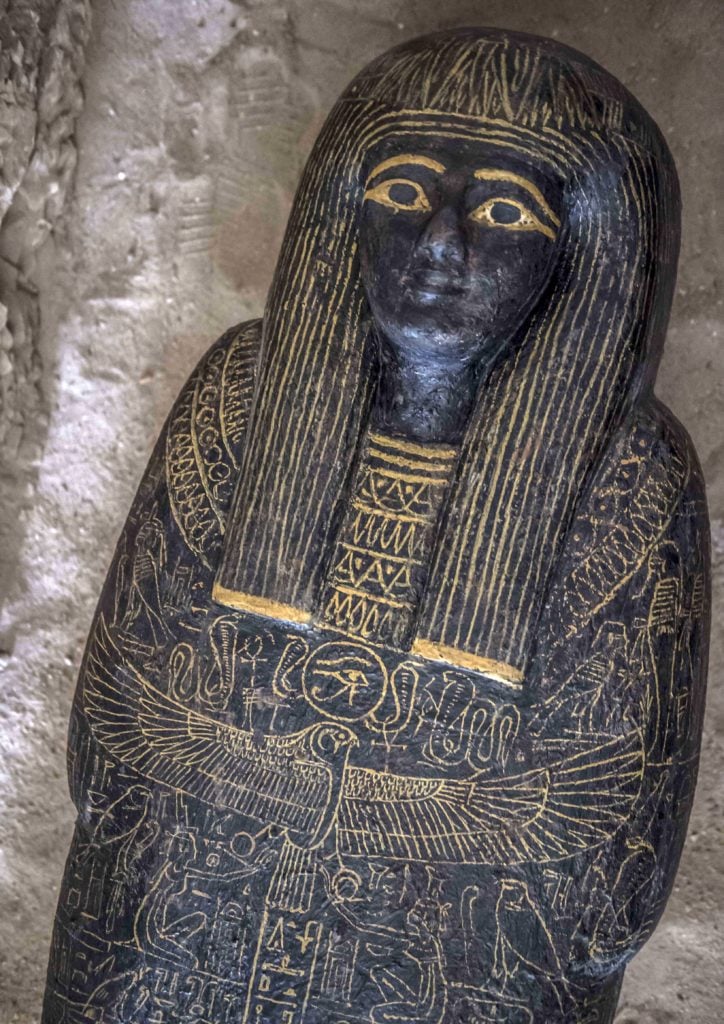
A carved black wooden sarcophagus inlaid with gilded sheets discovered by an Egyptian archaeological mission at the site of Tomb TT28, or Thaw-Irkhet-If, at Al-Assasif necropolis on the west bank of the Nile north of the southern Egyptian city of Luxor. Photo by Khaled Desouki/AFP/Getty Images.
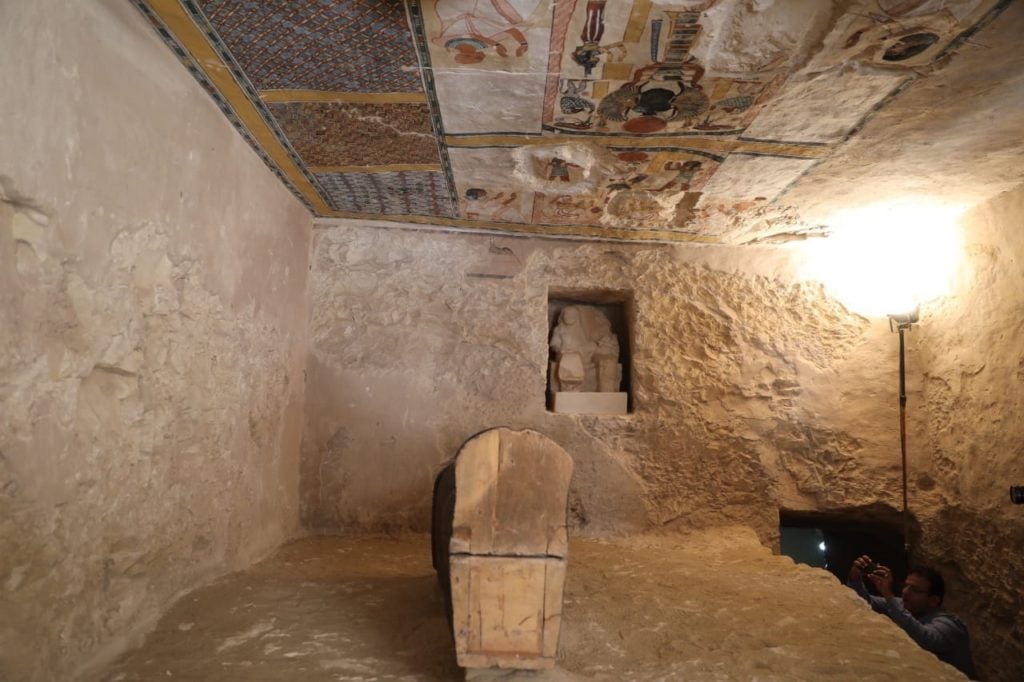
Egyptian officials have revealed the newly discovered Thaw-Irkhet-If tomb near Luxor. Photo courtesy of the Egyptian Antiquities Ministry.